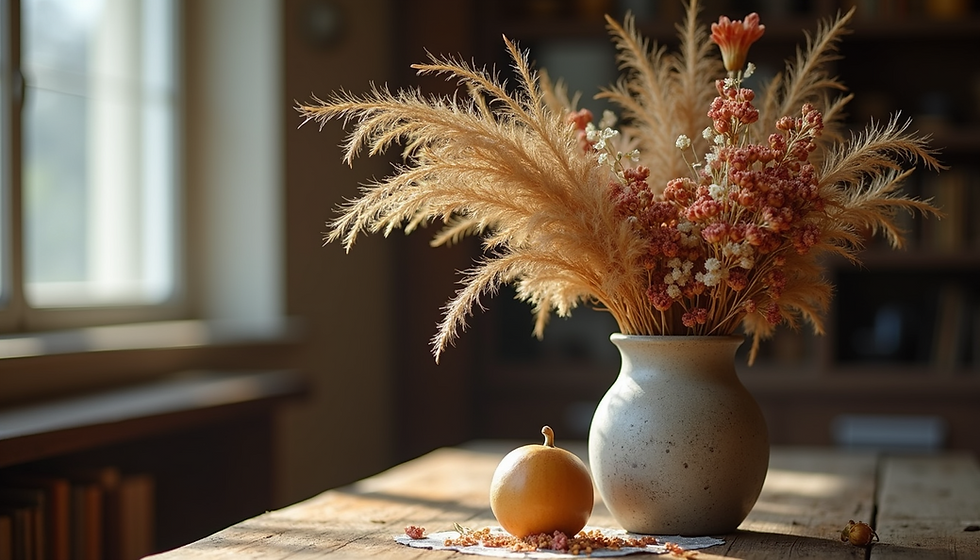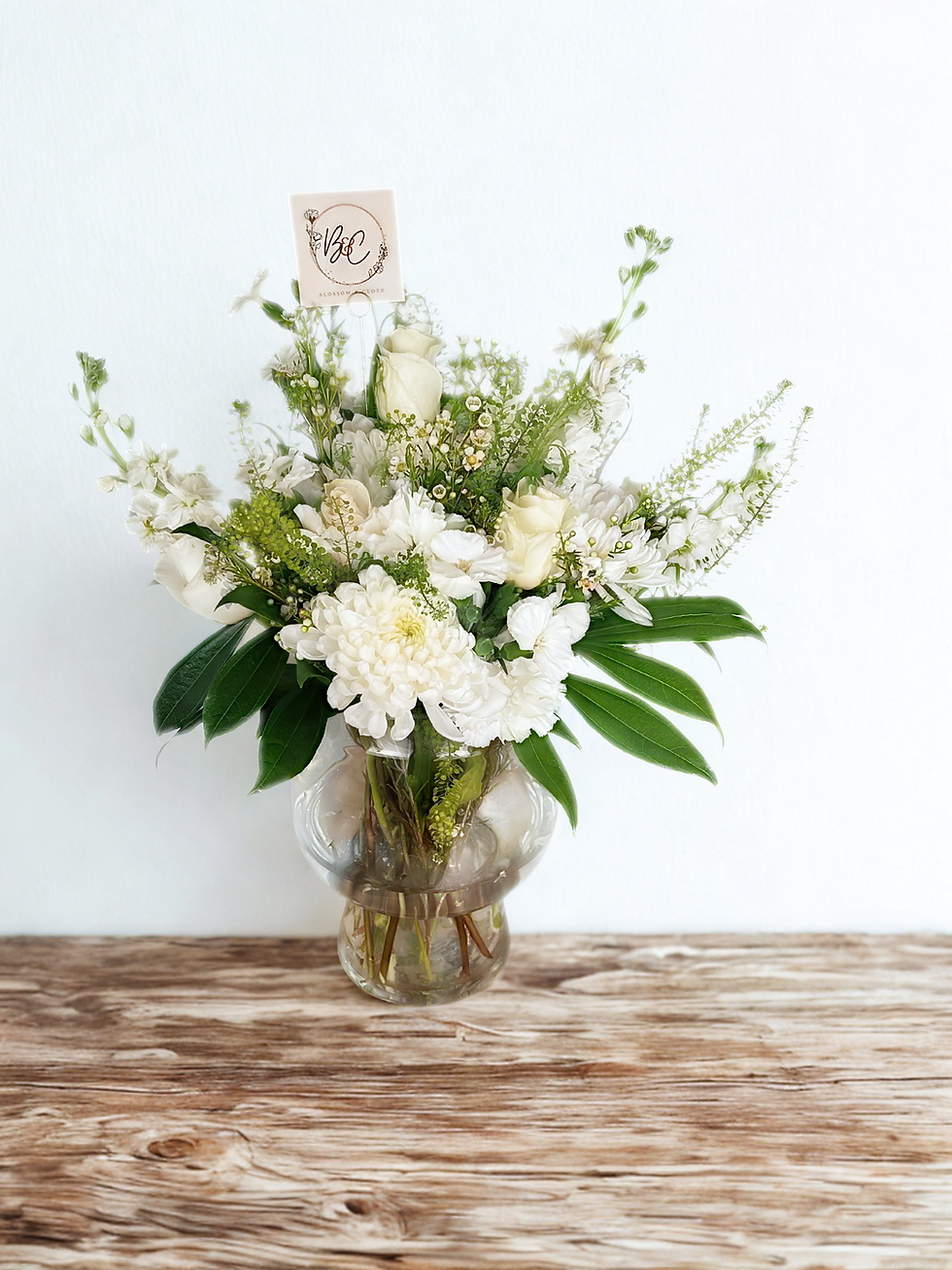How to Expertly Dry and Preserve Your Favorite Blooms for Lasting Beauty
- Blossom & Cloth

- Jul 16
- 4 min read
Updated: Jul 18

Capturing the beauty of blooms beyond their blooming season can be a delightful experience. For florists, brides, and flower lovers alike, knowing how to preserve these lovely plants is an essential skill that keeps memories alive. This guide will provide you with practical methods to dry and preserve your flowers, ensuring that your floral memories endure beautifully.
Selecting the Perfect Flowers
Choosing the right flowers is crucial for successful drying and preserving.
The best flowers for drying include:
Lavender: Retains color and fragrance well.
Rose: Preserves shape and petals with proper drying.
Statice: Known for its vibrant, long-lasting colors.
Yarrow: Maintains structure and delicate texture.
Strawflower: Naturally dries with a papery, colorful finish.
Baby’s Breath: Keeps its airy, white appearance.
Celosia: Holds its unique, feathery shape.
Globe Amaranth: Dries into round, vibrant blooms.
For best results, harvest flowers at their peak, hang them upside down in a dark, dry, well-ventilated area, and avoid direct sunlight.
Fragrance and Durability Matter when you Dry and Preserve
Not all flowers dry equally well. Flowers such as lavender, roses, and eucalyptus are great choices due to their strong fragrances and sturdy structures. For example, lavender not only smells wonderful but can also maintain its vibrant color and shape after drying.
Timing is Key
Harvest flowers at their prime. Ideally, pick blooms that are just starting to open or are fully open but not wilting. Morning is the best time; wait until the dew has evaporated to ensure they are fresh. Picking at the right time can improve the drying process, leading to flowers that can last for several years.
Drying Methods
Now that you have your chosen blooms, let’s explore some effective drying methods.
Air Drying
Air drying is simple and works well for many flower types.
Preparation: Start by removing excess leaves from the stems to help them dry faster.
Bunching: Gather small bunches of flowers and tie them with string or twine.
Hanging: Hang the bundles upside down in a dark, dry, well-ventilated space. This helps prevent color fading.
Duration: Let them dry for about two to three weeks. Flowers like roses can lose about 10% of their original water weight during this process without compromising their beauty.
Air-dried flowers add rustic charm to decor, making them perfect as centerpieces or wall hangings.
Pressing Flowers
If you prefer flat flowers, pressing them is an ideal method.
Choose the Right Flowers: Opt for thin blooms such as pansies, daisies, or violets. According to research, these flowers generally provide better drying results.
Preparation: Lay the flowers between two sheets of parchment paper.
Weight It Down: Use a heavy book on top to apply even pressure.
Wait: Check for dryness after one to two weeks. Pressed flowers can last for years and can be used in greeting cards or home decor.
Microwave Drying
For those pressed for time, microwave drying is quick and efficient.
Supplies Needed: Gather silica gel (available at craft stores), a microwave-safe container, and your chosen flowers.
Prepare the Container: Add a layer of silica gel to the container, then place the flowers on top.
Cover with Silica: Gently bury the flowers with more gel to keep their shape.
Microwave: Heat in bursts of 30 seconds, checking in between until dried.
Final Touches: Once cooled, remove the flowers from the silica gel. This technique can preserve colors and shapes at nearly 90%.
Microwave-dried flowers look incredibly vibrant and are perfect for those who want beautiful results in less time.
Preserving Flowers
You might also want to consider methods that maintain the flowers' natural beauty.
Glycerin Preservation
Glycerin is an effective way to keep flowers looking fresh.
Preparation: Mix one part glycerin with two parts water in a vase.
Select Stems: Choose sturdy flowers like roses, sage, or even ferns, and remove excess leaves.
Submerge: Place the stems in the glycerin mixture.
Wait: Within a few weeks, the flowers will absorb glycerin, becoming soft yet well-preserved.
This method allows flowers to maintain a fresh appearance, often lasting for several years.
Waxed Flowers
Waxing not only preserves flowers but also gives them a unique look.
Gather Supplies: Get paraffin wax and a double boiler for melting.
Melt Wax: Melt the wax until fully liquid.
Dip the Flowers: Carefully dip each flower into the wax, ensuring complete coverage.
Cool: Set them on parchment paper to cool and harden. Waxed flowers can last indefinitely, making them a perfect decoration.
Showcasing Your Dried and Preserved Flowers
Once your flowers are beautifully dried or preserved, consider these ideas for display.
Creating Floral Arrangements
Use your dried flowers to craft stunning arrangements. For example, mix dried lavender with eucalyptus in a vintage jar to create a beautiful centerpiece. Seasonal arrangements can bring charm to any room.
Crafting
Dried and pressed flowers can be incorporated into many crafts. From greeting cards to wall art, they provide a personal touch. Imagine crafting a unique piece of art that features a pressed rose from your own garden.
Lawn and Garden Decor
Consider using dried flowers for seasonal décor in your garden or making wreaths. This unique look can enhance your outdoor space, allowing you to celebrate the beauty of nature year-round.
Cherishing Your Favorite Blooms
Learning to dry and preserve flowers is a rewarding craft that gives you the power to cherish special moments for years to come. By selecting the right flowers, employing effective methods, and displaying your creations meaningfully, you can keep the enchanting beauty of nature alive in your home.
Whether you prefer air-drying, pressing, or using modern techniques, each method offers its unique charm. Embrace your passion, and let each dried bloom narrate a story of its own!
Remember, the art of preservation lies in your love for flowers and the care you apply. Happy crafting!




Comments